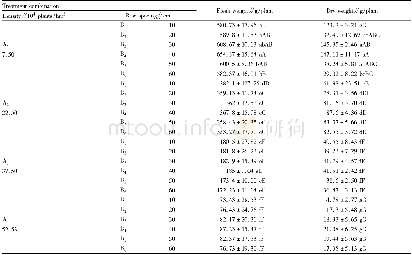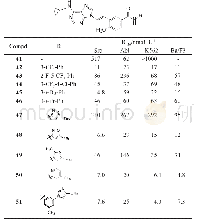《Table 5 Effects of dispersants on lead corrosion》
 提示:宽带有限、当前游客访问压缩模式
提示:宽带有限、当前游客访问压缩模式
本系列图表出处文件名:随高清版一同展现
《A Study of Lead Corrosion of Diesel Engine Oil》
Different types of succinimide dispersants were added separately into the same baseline formulation at a constant concentration to determine their effects on lead corrosion.ZDDP was used as a corrosion inhibitor in the baseline formulation.The results in Table 5 show the borated dispersant had the lowest lead weight loss.In Figure 3,the dispersant TBN was plotted against the lead weight loss.There was a positive correlation between the lead corrosion and the dispersant TBN.Higher concentration of dispersant TBN produced more severe lead corrosion.This was due to the antagonistic interactions between ZDDP and the dispersant.It has been suggested that dispersants can reduce the activity of ZDDP through complexation.Some researchers have stated that the complexation is between ZDDP and the dispersant through P-N bonding[8-9],whereas others suggested the Zn-N bonding[10-11].Ramakumar,et al.[12]also found that the low-N-content dispersants could form weak complexes in solution,whereas the higher-N-content dispersants could form more tight bonds.Since the dispersant TBN is proportional to the N-content,it could affect the complexation and ZDDP activity.The result of the borated dispersant was not plotted in Figure3,as the structure of the dispersant was different from others.Although the TBN of borated dispersant was relatively high(TBN=40 mg KOH/g),the borating could significantly reduce the interaction between the ZDDP and the dispersant,resulting in a very low level of lead corrosion.
| 图表编号 | XD0011302900 严禁用于非法目的 |
|---|---|
| 绘制时间 | 2018.06.30 |
| 作者 | Xu Jie、Xia Qinghong、Zhang Feng、Wu Zhiqiang |
| 绘制单位 | SINOPEC Research Institute of Petroleum Processing、SINOPEC Research Institute of Petroleum Processing、SINOPEC Research Institute of Petroleum Processing、SINOPEC Research Institute of Petroleum Processing |
| 更多格式 | 高清、无水印(增值服务) |





